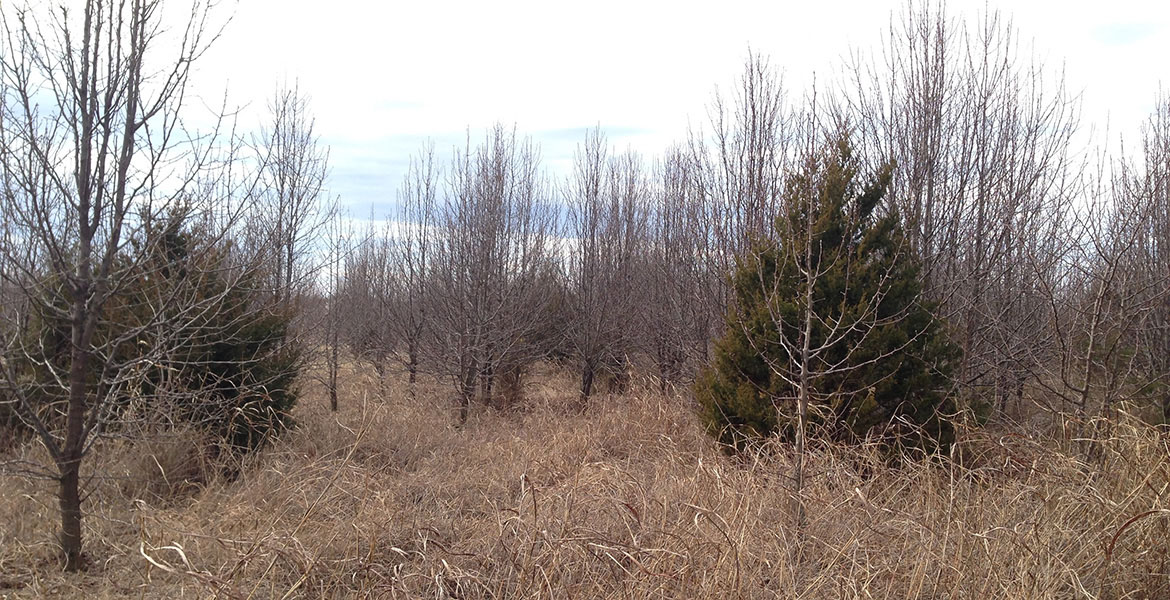
Consider alternatives to the invasive callery pear
Monday, February 4, 2019
Although commonly used in landscapes as an ornamental because of the showy white flowers in early spring and beautiful fall foliage, the callery pear is not a great choice for homeowners. In addition, it is known to be an invasive species.
The Invasive Callery Pear, a new fact sheet available at facts.okstate.edu, gives landowners valuable information about controlling this invasive species and how to protect their productive agricultural land. Search by title or publication number L-469.
Dwayne Elmore, Oklahoma State University Cooperative Extension wildlife specialist, said the seeds of callery pear and its various cultivars are easily dispersed by birds, allowing these trees to invade open spaces such as pastures, grassland and open woodlands.
“While they may provide shade around home and commercial property, the rapid growth of these trees quickly fills in open spaces, converting them to woodlands,” Elmore said. “These trees have the ability to form dense thickets that result in the shading out of native species, causing rapid change in plant and wildlife communities. Callery pear is a significant threat to native grasslands and grassland wildlife, but it also invades forested areas.”
Due to its dense structure, callery pear is a very accessible roosting tree for gregarious blackbirds, grackles and starlings, which are problematic in urban areas due to defecation on cars and sidewalks and human health concerns. In addition, callery pear is weak and easily damaged by ice and wind.
“If you’ve lived in Oklahoma for any length of time, you’ve seen first-hand the damage caused by ice storms and high winds,” he said. “When this tree is used in urban settings and landscapes, they often cause power outages when the limbs snap in adverse conditions and fall on power lines.”
Zero tolerance is the best way to control callery pear. Because it is a vigorous resprouter, it is even more difficult to control than the native eastern redcedar. Unless landowners completely uproot the tree, herbicides will be needed for control.
Elmore said newly established trees can be sprayed with a foliar herbicide such as triclopyr. Trees less than 6 inches in diameter at the base can be eradicated with a basal bark method with either a spray bottle or backpack sprayers. Spray from the ground level of the stem up to about a foot and fully coat the entire circumference of the stem with a mixture of 25 percent triclopyr ester and 75 percent crop oil.
If you choose to cut down the trees, spray the stump within 15 minutes with a 25/75 percent mixture of herbicide and water to the entire outer portion of the tree stump. Undiluted glyphosate also can be used for cut-stump treatments. Because callery pear are prolific seed producers, follow-up treatments likely will be needed.
“If you like the look of the callery pear, a good alternative is the eastern redbud,” Elmore said. “You also may want to consider American plum, Mexican plum and Carolina buckthorn. These are beautiful, noninvasive options that grow well in landscapes.”
For more information, watch these segments on the “Oklahoma Gardening” YouTube channel in which Elmore talks more about the callery pear. One segment found at https://okla.st/2sYkgqP addresses problem plants and the other specifically covers specifically callery pear and is located at https://okla.st/2sY41tL.
Story by Trisha Gedon
